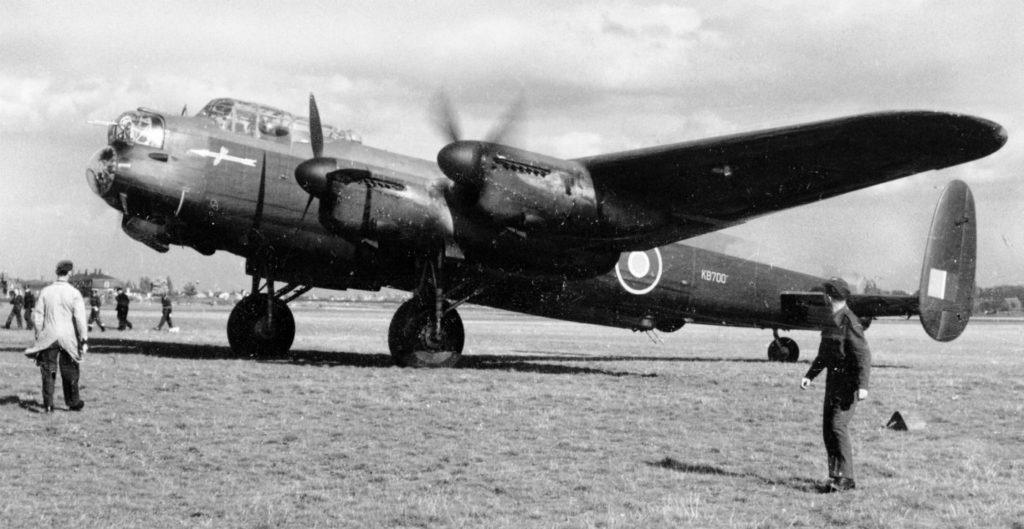- Yes
- No
Hello, I’d like to suggest the Canadian-built Lancasters.

History:
Due to the success of 4-engine bombers in US and Soviet projects during the 1930s, the RAF would begin looking into the feasibility of one. However, due to the RAF’s interest in twin-engine bomber designs at the time, the Lancaster would have its origins in one, one known as Manchester.
The Lancaster would start out as a modified Manchester to take four 4-engines. These would use the Power-egg installation method that had been developed for the Beaufighter II. The first Lancaster prototype would have its first flight on the 9th of January in 1941. The subsequent prototype would receive a handful of changes, including a twin-finned tail that was also used on the last Manchester product and would be fitted with the Merlin XX engines. It was decided that the Manchesters on the production line would be converted into Lancasters, as the decision was made to re-equip the twin-engine bomber squadrons with Lancasters as fast as possible. The first production Lancaster would have its first flight in October of 1941.
Canada would be picked to help produce the Lancaster in late 1941. The drawing of the plane would arrive in January of 1942, and in August of 1942, a British-built Lancaster would be sent overseas as a pattern aircraft, with it being the first of its type to perform a transatlantic crossing. Well, the first Canadian Lancaster, which was named “Ruhr Express,” was completed a year later on the 1st of August in 1943. Although due to the lack of skilled labour at the time, the first batch of Canadian Lancasters delivered to England would have faulty ailerons. By the end of the war, there would be more than 10,000 Canadians working on building Lancasters, with a quarter of them being women, who were able to build one Lancaster per day.
Within the RAF Bomber Command, the RCAF formed 6 Group at the start, which would grow to 14 squadrons by the end of the war, and by 1944, all but one of them would be equipped with various Lancaster marks. Two Canadian Lancaster crewmen would be awarded Victoria Crosses.
The Canadian-built Lancasters would have a number of differences that got more extreme with later modifications. These would use Packard-built Merlin engines and North American instruments and radio equipment. Later production would have the Nash & Thomson dorsal turret replaced by a Martin 250CE, and would receive the modifications required to support the altered weight, the turret was mounted further forward. Post-war, the variants got even more extreme, converted into a number of Reconnaissance variants, tested beds for the Orenda engines, drone controller and a Maritime Patrol variant.
Specs:
Powerplant: Four 1,620 horsepower Packard Merlin 224 piston engines
Maximum speed: 272 miles per hour (438 kilometres per hour)
Cruising Speed: 200 miles per hour (322 kilometres per hour)
Service Ceiling: 24,700 feet (7,528 metres)
Range: 2,530 miles (4,072 kilometres)
Empty weight: 35,240 pounds (15,999 kilograms)
Gross weight: 60,000 pounds (27,400 kilograms)
Span: 102 feet (31.09 metres)
Length: 69 feet 6 inches (21.18 metres)
Height: 20 feet (6.10 metres)
Wing area: 1,297 square feet (120.49 square metres)
Armament:
Guns:
2 x .303 cal (7.7 mm) in nose turret
2 x .303 cal in dorsal turret
4 x .303 cal in tail turret
Ordnance: 14,000 lb (6,350 kg) bomb load
Sources
Avro Lancaster - Wikipedia
Avro Lancaster | The Canadian Encyclopedia
Aircraft Details | Canadian Warplane Heritage Museum
Canadian Warplanes 3: Avro Lancaster, RCAF, 1942-1945
AVRO LANCASTER MK X | The Hangar Flight Museum
Canadian Built Avro Lancasters
Avro 683 Lancaster X - Canada Aviation and Space Museum



